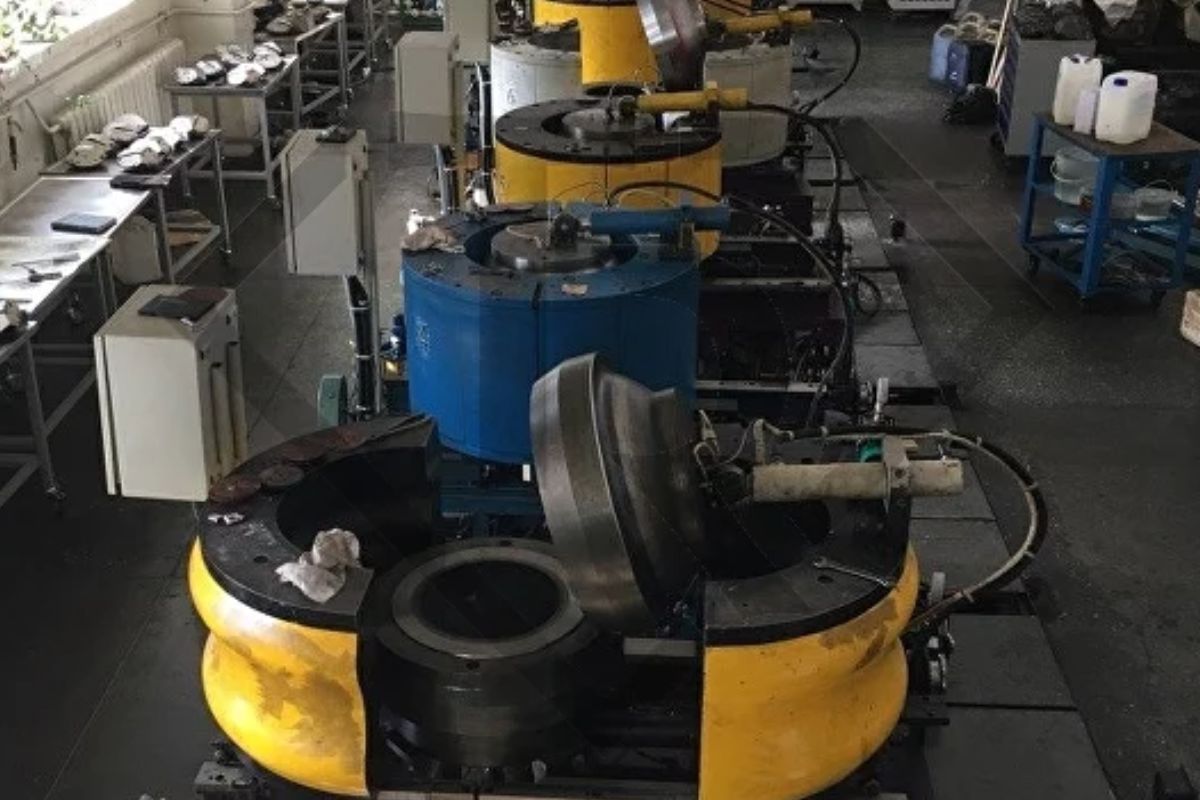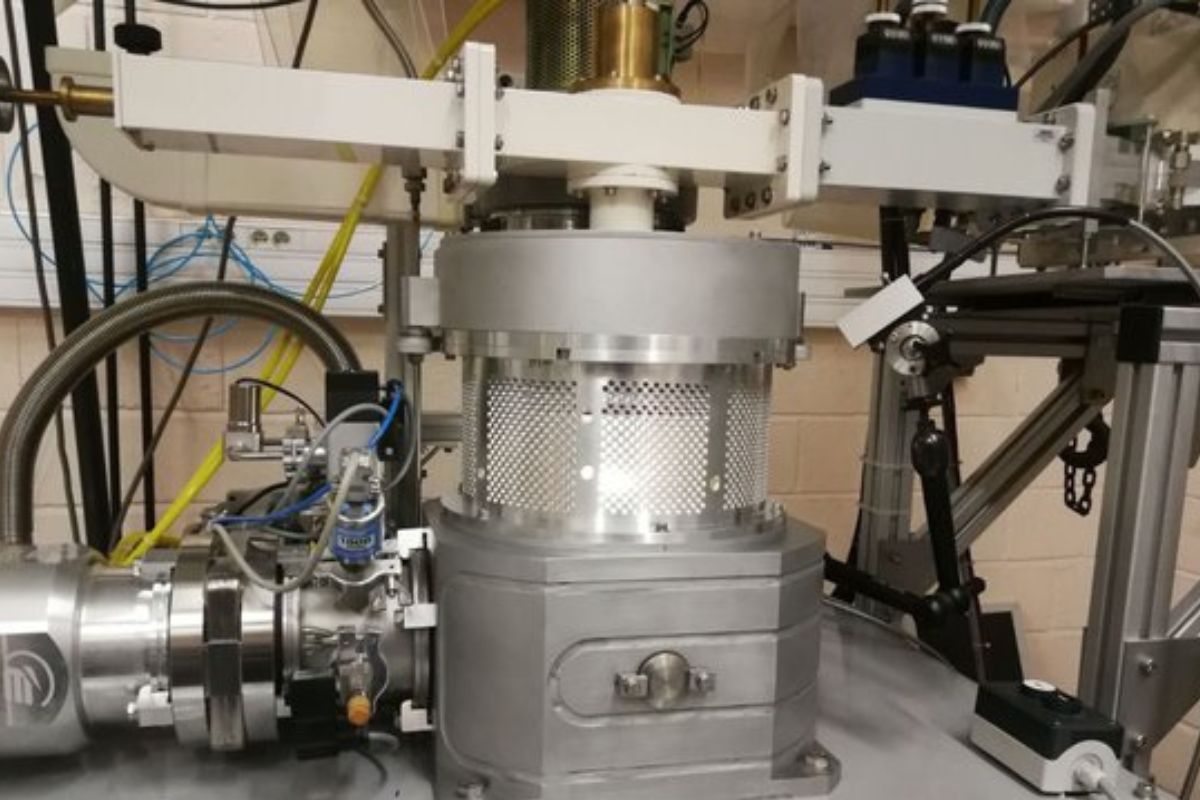
HPHT vs CVD: Understanding Different Diamond Synthesis Methods
In the realm of synthetic diamond creation, two predominant methods exist: High Pressure High Temperature (HPHT) and Chemical Vapor Deposition (CVD). These techniques have transformed how diamonds are produced, offering alternatives to natural diamonds with potential applications across various industries from jewelry to electronics. Understanding the distinction between HPHT and CVD is crucial, as each method bears its unique properties and implications for the quality and characteristics of the resulting diamonds.
HPHT diamonds are created in a process that mimics the natural formation of diamonds within the Earth's mantle. This method involves subjecting a small diamond seed to extreme pressures and temperatures, which causes carbon atoms to precipitate onto the seed, gradually growing into a larger diamond. On the other hand, CVD diamonds are produced in a laboratory setting using a different approach. This process involves breaking down gas molecules into carbon atoms, which are then deposited onto a substrate, allowing the diamond to grow layer by layer.
Each technique has pros and cons regarding cost, production time, and the purity and type of diamonds produced. Your choice between HPHT and CVD diamonds may depend on the intended application or preference for certain diamond qualities. Nonetheless, with continuous advancements in both methods, synthetic diamonds are becoming increasingly indistinguishable from their natural counterparts, opening up new possibilities for consumers and industries alike.
Basics of Diamond Formation
Diamonds are a form of carbon that, depending on their formation process, fall into two distinct categories: natural and lab-grown. Whether produced deep within the Earth or in a controlled laboratory environment, the properties of diamonds are the result of specific conditions of temperature and pressure.
Natural Diamond Genesis
In the mantle of the Earth, natural diamonds form under conditions of extreme pressure and high temperature. Over billions of years, about 100 miles beneath the surface, carbon atoms bond in a crystal structure through the process of high pressure high temperature (HPHT). Volcanic eruptions then bring these gems closer to the surface, encapsulated in kimberlite pipes, making them accessible for mining.
Lab-Grown Diamond Production
Lab-grown diamonds, which replicate the optical and chemical properties of natural diamonds, are created using two primary methods: HPHT and chemical vapor deposition (CVD). In the HPHT method, pure carbon is exposed to high temperature and high pressure similar to natural conditions, resulting in diamond crystals. CVD involves breaking down molecules of a carbon-rich gas, usually methane, in a vacuum chamber and depositing them onto a substrate, where they form as a diamond. Both processes produce real diamonds with the same physical and chemical characteristics as natural diamonds.
Understanding HPHT

Before diving into the specifics, you should know that the High Pressure High Temperature (HPHT) method is a widely recognized process for creating synthetic diamonds that closely mimic natural ones. As the name suggests, it relies on simulating the natural conditions that form diamonds deep within the Earth.
HPHT Process Explained
The HPHT process involves placing a small diamond seed in a carbon-rich environment, typically using graphite as the carbon source. You then subject this setup to high pressure and high temperature, often greater than 1.5 million pounds per square inch and in excess of 2000 degrees Fahrenheit. This environment mimics the natural conditions where diamonds form over millions of years, but accelerates the process to a matter of weeks or months.
Stages of the HPHT Process:
- Preparation: A diamond seed is carefully selected for quality and placed in the growth cell.
- Growth: The cell is brought to the necessary conditions to convert carbon into a diamond around the seed.
- Cooling: Once the growth phase completes, the environment is gradually returned to normal conditions to prevent any damage to the new diamond.
Under your watchful eye, the carbon atoms deposit layer by layer onto the seed, slowly growing a rough diamond that can then be cut and polished.
Characteristics of HPHT Diamonds
HPHT diamonds exhibit several distinguishing characteristics directly influenced by the production process:
- Color: The HPHT method can not only create colorless diamonds but can also enhance or change the colors of lower-grade diamonds, owing to controlled alterations during the treatment.
- Clarity: While synthetic, HPHT diamonds can achieve a high level of clarity, comparable to that of a high-quality natural stone due to the controlled environment of their formation.
- Physical Properties: HPHT diamonds feature the same optical, chemical, and physical properties as natural diamonds, making them just as durable and brilliant.
By understanding that HPHT diamonds are as real as their earth-mined counterparts, you gain an appreciation for the technological marvel that allows for the faster creation of these precious stones. Remember, while an HPHT diamond is synthetic, it is created through an arrangement that mirrors the natural formation of diamonds, with high pressure and high temperature as foundational elements.
Exploring CVD

As you delve into the world of synthetic diamonds, understanding the Chemical Vapor Deposition (CVD) method becomes essential. It's a sophisticated process that facilitates the production of high-quality CVD diamonds, which are gaining prominence in various industries.
CVD Process Overview
The CVD process starts by placing a small diamond seed in a vacuum chamber. The chamber is then filled with a methane gas mixture and other carbon-containing gases. When energy, often in the form of plasma, is introduced, it activates the gas molecules, causing carbon atoms to precipitate onto the diamond seed. This results in a layer by layer growth of the diamond, allowing for precise control over the diamond’s properties.
- Key Steps in the CVD Process:
- Diamond Seed Placement: Insert diamond seed into the chamber.
- Gas Introduction: Add methane and other gases to the chamber.
- Energy Application: Plasma enhances the gas mixture's reactivity.
- Layer Formation: Carbon atoms settle on the seed, growing the diamond incrementally.
Properties of CVD Diamonds
CVD diamonds exhibit remarkable qualities similar to those found in natural diamonds. They possess exceptional hardness and thermal conductivity, making them ideal for a variety of applications, from jewelry to industrial uses.
- Characteristics of CVD Diamonds:
- Hardness: Comparable to natural diamonds.
- Thermal Conductivity: Efficient heat dissipation.
- Optical Clarity: High quality suitable for gemstones.
Through processes like HPHT treatment, imperfections in CVD diamonds can be reduced, improving their color and clarity. Advanced techniques continue to enhance the growth efficiency and the quality of the diamonds produced, ensuring that CVD diamonds meet high standards.
Comparative Analysis
| Aspect | HPHT Diamonds | CVD Diamonds |
|---|---|---|
| Formation Process | Created using High Pressure High Temperature methods that simulate the conditions within the Earth's mantle where natural diamonds form. | Created using Chemical Vapor Deposition methods that involve the deposition of carbon atoms onto a substrate in a controlled chamber. |
| Temperature and Pressure | Requires high temperatures (around 1,500 to 2,000 degrees Celsius) and pressures (around 5 to 6 GPa) to mimic natural diamond formation. | Operates at lower temperatures (around 700 to 1,300 degrees Celsius) and pressures (subatmospheric to low atmospheres). |
| Speed of Growth | Generally faster growth process compared to CVD, resulting in quicker production of diamonds. | Slower growth process compared to HPHT, requiring more time for diamond crystal formation. |
| Quality Control | Allows for good control over impurities and crystal quality. Can produce diamonds with fewer inclusions and consistent quality. | May have challenges in controlling impurities, and the resulting diamonds may have varied quality and inclusions. |
| Cost | Can be more expensive due to the high energy and pressure requirements. However, advancements in technology are reducing costs. | Generally more cost-effective than HPHT due to lower temperature and pressure requirements. Continuous advancements may further reduce costs. |
| Color Range | Can produce diamonds in a wider color range, including fancy colors, based on the addition of specific elements or treatments. | Often produces diamonds in the near-colorless to faint yellow range, but advancements are expanding the color possibilities. |
| Applications | Commonly used for producing larger, high-quality diamonds for various industrial and gemstone applications. | Well-suited for creating smaller diamonds for industrial purposes and an increasing share of gem-quality diamonds for jewelry. |
| Market Presence | Historically, HPHT diamonds have been more prevalent, especially in larger sizes and fancy colors. Growing popularity for gemstone applications. | Increasingly gaining market share, especially for smaller diamonds. Growing popularity for both industrial and gem-quality diamonds. |
| Environmental Impact | Energy-intensive process with a notable environmental footprint. Ongoing efforts to improve sustainability. | Relatively lower environmental impact compared to HPHT, but still requires energy. Continuous efforts to enhance sustainability. |
In exploring HPHT and CVD diamond creation methods, you'll encounter significant differences in the processes used and the resulting material properties. Understanding these variations is crucial for applications like radiation detection or electronic component manufacturing, where diamond quality is paramount.
HPHT vs CVD Processes
High Pressure High Temperature (HPHT) diamonds are synthesized under conditions mimicking the natural diamond formation within the Earth. Your HPHT diamond is subject to temperatures around 1400-1600°C and pressures of 5-6 GPa. The pivotal aspect of the HPHT process is its ability to turn pre-existing carbon-rich materials into diamonds.
On the contrary, Chemical Vapor Deposition (CVD) grows synthetic diamonds by introducing a carbon-rich gas, typically methane, into a vacuum chamber at lower pressures and temperatures (about 800-1000°C). The gas is energized to break down its molecules, allowing carbon atoms to precipitate onto a substrate, gradually building up the diamond crystal.
Physical and Chemical Distinctions
In terms of physical properties, HPHT diamonds often display a variation in color due to the presence of nitrogen and other impurities. They can achieve high clarity, but this depends on the purity of the starting materials and the precision of the process. The CVD method, conversely, is known for producing synthetic diamonds with fewer impurities and more uniform color and clarity, due to the controlled conditions and slower crystal growth.
Chemical structure is a cornerstone in distinguishing between HPHT and CVD diamonds. While they share the same fundamental carbon lattice that characterizes all diamonds, the presence and type of defects and impurities diverge. The stress in CVD diamonds, indicated by a study, quantifies the higher internal strain due to growth conditions, which affects their usage in sensitive applications like radiation detectors.
It's essential for you to recognize that, despite these differences, both HPHT and CVD are considered authentic synthetic diamonds. They possess respective merits and can be tailored for a variety of industrial or cosmetic uses based on their distinct physical and chemical attributes.
Market and Pricing
When considering HPHT vs CVD diamonds, you face two prominent lab-grown options that have different implications on cost and supply chain. Understanding these factors is vital in making an informed decision about which type of lab-grown diamond suits your needs, particularly if you're looking for value in the jewelry market.
Cost Comparison
HPHT (High Pressure High Temperature) diamonds and CVD (Chemical Vapor Deposition) diamonds vary in production cost, which is directly reflected in their market pricing. HPHT diamonds have traditionally been less expensive to produce and, consequently, can be more affordable for consumers. On the other hand, CVD diamonds have seen a reduction in manufacturing costs over time. However, they may still be priced higher due to the more advanced technology required for their production.
Supply Chain Factors
The supply chain for lab-grown diamonds, whether HPHT or CVD, is shorter and less complex than the supply chain for mined diamonds. This can affect the overall value proposition of lab-grown diamonds as being more ethically sourced and environmentally friendly. In terms of supply, HPHT diamonds are abundant since this method has been around for a longer time. However, CVD technology is rapidly catching up, with increased interest in niche markets where unique qualities of CVD-produced gems—such as fewer defects—are highly prized.
Quality and Certification

When selecting either HPHT or CVD synthetic diamonds, understanding their quality and the significance of certification is crucial. Recognized gemological institutes such as the IGI (International Gemological Institute) and the GIA (Gemological Institute of America) provide grading reports that critically assess the color, clarity, and overall quality of these gemstones.
Grading Standards
The quality of HPHT and CVD synthetic diamonds is assessed on the same criteria used for natural diamonds. These grading standards judge the stones based on four key attributes: color, clarity, cut, and carat weight; collectively known as the 4Cs. A grading report from a reputable organization like the GIA provides a wealth of information on these parameters, giving you a comprehensive understanding of the diamond's characteristics.
Importance of Certification
A reliable certification from esteemed entities such as the GIA or IGI serves as your assurance of the synthetic diamond's authenticity and quality. The grading report not only confirms the gemstone's origin—distinguishing between HPHT and CVD—but also details its unique attributes. This certification is indispensable when purchasing a diamond, ensuring that your investment is protected and that the quality claimed aligns with an internationally recognized standard.
Remember, certification provides a transparent insight into your diamond's quality, securing your confidence in the purchase.
Ethical and Environmental Considerations

When considering the purchase of diamonds, you should be aware that both lab-created and natural stones have different impacts on the environment and society. Your choice between High-Pressure High-Temperature (HPHT) and Chemical Vapor Deposition (CVD) diamonds has implications that extend beyond aesthetics.
Sustainable Practices
Lab-created diamonds, which include both HPHT and CVD diamonds, typically have a smaller environmental footprint than mined stones. HPHT diamonds are crafted under high temperatures and pressures, closely resembling the natural conditions that create diamonds underground. On the other hand, CVD diamonds are grown in a controlled environment using a hydrocarbon gas mixture. The production of lab-created diamonds can use significant amounts of energy, so it's important to consider diamonds created using renewable energy sources to decrease the environmental impact.
- HPHT: May require more energy initially due to high temperatures.
- CVD: Tends to be more energy-efficient and can be produced at a lower temperature.
Ethical Implications of Diamond Choices
The ethical considerations in diamond purchasing revolve around the supply chain. Man-made diamonds provide a certain peace of mind regarding their origins compared to natural diamonds, which can sometimes be associated with conflict zones. Cultured diamonds, like HPHT and CVD, assure you of a more ethical lineage, as they circumvent the often controversial traditional diamond mining industry.
- Man-made Diamonds: Known origins that avoid traditional mining ethical issues.
- Supply Chain Transparency: Lab-created options enhance the ability to trace your diamond's production history.
By choosing lab-created HPHT or CVD diamonds, you are opting for stones that are not only environmentally friendly but also carry fewer ethical concerns. Your informed choice reflects a commitment to both the planet and humane practices within the gemstone industry.
Advanced Technologies and Innovations
In the rapidly evolving world of diamond synthesis, advanced technologies and innovations are reshaping the industry. You’ll find that new techniques not only refine the creation of lab-created diamonds but also enhance their quality and applications.
New Developments in Diamond Synthesis
Recent advancements in High-Pressure High-Temperature (HPHT) and Chemical Vapor Deposition (CVD) technologies have streamlined the synthesis process. HPHT methods now utilize sophisticated machinery that better mimics the natural conditions under which diamonds are formed. These machines are capable of applying intense pressures and temperatures, improving the crystal growth and reducing impurities.
CVD processes, on the other hand, have made strides by optimizing the hydrocarbon gas mixture used in diamond creation. Innovations in gas chemistry allow for more precise control over the deposition conditions, leading to higher-quality diamonds with fewer defects. The performance and defect analysis for alpha radiation detectors underscores the importance of such enhancements.
Post-growth treatment, a critical step in diamond synthesis, now includes new techniques that enhance the color and clarity of the diamonds. These treatments are designed to ensure that gemological labs can certify lab-created diamonds with the same strict standards applied to natural diamonds.
The Future of Diamond Manufacturing
As lab-created diamonds continue to gain acceptance, the future of diamond manufacturing looks promising, with technology playing a pivotal role. Gemologists and gemological labs now have at their disposal more sophisticated testing equipment, thanks to technological advancements. This equipment can differentiate between HPHT and CVD diamonds with greater accuracy and facilitate the identification of post-growth treatments.
Your understanding of lab-created diamonds will be incomplete without considering the role of gemological labs. Increased collaboration between diamond manufacturers and these labs is driving innovation, leading to standardized certification processes that assure the quality of synthetic diamonds.
Moreover, manufacturers are experimenting with novel hydrocarbon gas mixtures to alter not just the quality but also the types of lab-created diamonds. This progress puts you at the forefront of a dynamic field, where the quality of diamonds produced is consistently rivaling that of their natural counterparts. As a testament to the advancements, the innovative characterization methods in gem labs have received significant attention.
Lastly, with the growth in the lab-created diamond sector, you can anticipate continuous improvement in both HPHT and CVD methods, ensuring that the industry remains at the cutting-edge of both scientific and commercial innovation.
Consumer Considerations

When selecting a synthetic diamond, whether HPHT or CVD, you must consider both the tangible aspects such as cut, color, and carat weight, as well as the market dynamics that may influence availability and price.
Selecting the Right Diamond
Cut: The precision of a diamond's cut affects its brilliance and value. Whether you choose an HPHT or a CVD diamond, ensure the cut is executed with expert craftsmanship. The quality of the cut directly affects the diamond's sparkle and aesthetic appeal.
Color: Color grades in synthetic diamonds range from colorless to light yellow or brown, similar to natural diamonds. While CVD diamonds may exhibit a range of colors, HPHT treatment can effectively enhance or alter the color of a synthetic diamond. Always opt for a reliable jeweler who can provide detailed information on color grades, such as the GIA's color grading system.
Carat Weight: Carat weight denotes the size of the diamond. Both HPHT and CVD diamonds are available in various sizes. Choose a diamond that fulfills your aesthetic desires as well as your budgetary requirements.
VVS (Very Very Slightly Included): Consider the clarity grade, such as VVS, which denotes a diamond with minute inclusions that are difficult to detect even under 10x magnification. The clarity is a crucial factor in both HPHT and CVD diamonds when seeking a nearly flawless appearance.
Fluorescence: Some synthetic diamonds may exhibit fluorescence when exposed to UV light, with varying degrees of intensity. While fluorescence can impact the appearance of a diamond in certain lighting conditions, its effect is a personal preference. You may find that fluorescence adds a unique character to the diamond or prefer one without this characteristic.
Understanding the Market
The market for synthetic diamonds is influenced by production methods—HPHT and CVD—each with distinct technological advancements and costs. Be aware that the prices for synthetic diamonds can vary and typically correlate with production complexity and the quality of the end product.
Awareness of the current market will empower you to make informed decisions. The growth technologies behind synthetic diamonds, particularly HPHT and CVD, can affect their availability. HPHT technologies have evolved to grow larger stones, as seen in some of the largest colorless synthetic diamonds, whereas CVD is known for enabling more control over the diamond's properties during the growth phase.
Understanding the nuances of both technologies will help you appreciate why certain synthetic diamonds may bear a premium over others and pinpoint the ideal choice for your individual taste and budget.
Frequently Asked Questions
In this section, you'll find direct answers to common queries on the differences and characteristics of High Pressure High Temperature (HPHT) and Chemical Vapor Deposition (CVD) diamonds.
What distinguishes the HPHT method from the CVD method in creating diamonds?
HPHT diamonds are created mimicking the natural conditions deep in the Earth by using high pressure and high temperature to transform carbon into diamonds. In contrast, CVD diamonds grow in a vacuum chamber filled with a carbon-rich gas mixture, where the gas is ionized into plasma and deposits carbon layer by layer onto a substrate, allowing the diamond to form over time.
How do prices typically compare between HPHT and CVD lab-grown diamonds?
Prices for HPHT and CVD lab-grown diamonds can vary, but generally, CVD diamonds may be less expensive due to the scalability and lower cost of the technology involved. The difference in cost also reflects the size and quality of the diamond produced.
What are the pros and cons of choosing HPHT diamonds over natural diamonds?
HPHT diamonds offer the pro of being more ethical and sustainable as they reduce the need for mining. They also provide a less expensive alternative while maintaining a similar aesthetic and physical properties. However, one con is that HPHT diamonds may contain metallic inclusions, giving a different type of fluorescence and color zoning compared to natural diamonds.
When considering diamond quality and properties, how does the CVD method stack up against natural diamonds?
CVD diamonds can achieve a high level of quality, often comparable to natural diamonds, with fewer defects and potential for larger sizes. The CVD method can produce diamonds with fewer strains and a more uniform crystal structure, which is favorable for certain technological applications.
How does the durability and appearance of CVD/HPHT diamonds compare to that of Moissanite?
CVD/HPHT diamonds rank at the top of the Mohs scale of mineral hardness, just like natural diamonds, making them exceptionally durable. While moissanite also has high hardness, it has different optical properties, such as higher brilliance and fire, but can appear less diamond-like. Both CVD/HPHT diamonds and moissanite are suitable for everyday wear, with diamonds being chemically identical to natural stones.
What are some common drawbacks associated with CVD lab-grown diamonds?
Some of the drawbacks include the presence of brownish color hues that sometimes require additional treatment and the potential for grain lines, which are minor imperfections caused by the layering process. However, advancements in technology are continually reducing these flaws, making CVD diamonds an increasingly popular choice.
Checkout some of our top collections:
Leave a comment
Please note, comments must be approved before they are published.










